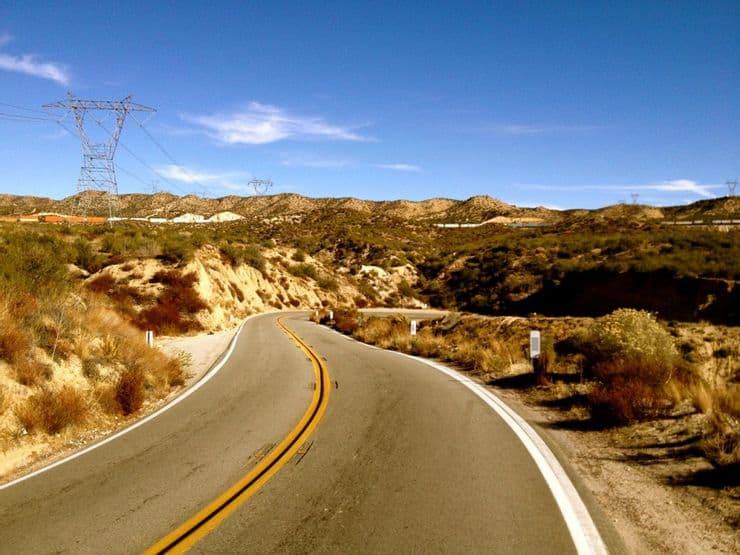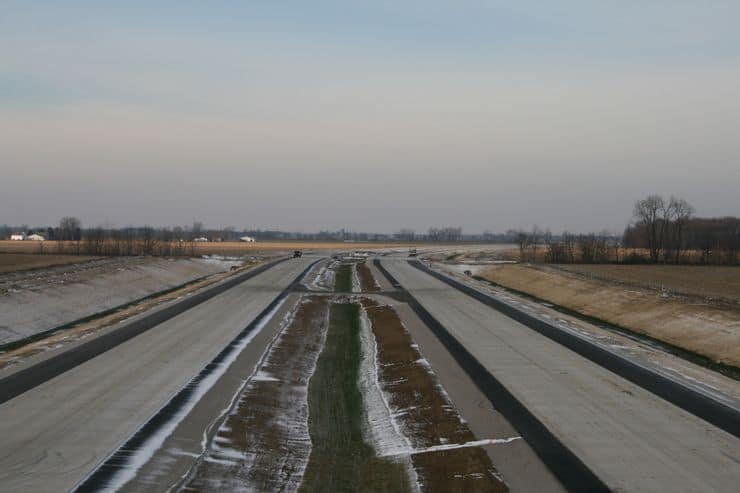Commercial truck drivers know the nation’s 4 million miles of roads better than almost anyone else. Last month, FreightWaves brought you five of the most dangerous roads for truckers. Based on driver experiences, as well as data from the U.S. Department of Transportation (DOT) and other sources, these are five more roads truckers should proceed with extra caution.
California Route 138: ‘Blood Alley’
Truckers shouldn’t be fooled by California Route 138’s official name of Pearblossom Highway. Because of its deadly history, many Californians call the road “Blood Alley” or “Highway of Death.”

The highway runs about 65 miles from Crestline to Palmdale, through the Mojave Desert. It got its ominous nicknames after a five-year period in which 56 people were killed and 875 were injured trying to tame it. The most dangerous stretch of the highway is east of the San Bernardino County line. The twisty two-lane road continued to average more than 10 fatalities per year until crews widened lanes and cleared sight lines in 2006, making it a bit safer.
Interstate 4 in Florida
Congestion and ongoing construction make any number of routes in Florida unappealing to truckers, especially Interstate 4. Running 140 miles from Tampa to Daytona Beach, it consistently ranks as one of the deadliest highways in the country.
According to Fatal Accident Reporting System (FARS) data from the National Highway Traffic Safety Administration (NHTSA), there were more than 165 deaths on Interstate 4 from 2014 to 2019. That’s around one death per mile.
U.S. Highway 24: Toledo to Fort Wayne
Built in 1926, U.S. Route 24 is a main commercial route between Toledo, Ohio, and Fort Wayne, Indiana. For decades, an overwhelming number of serious accidents occurred on the narrow road, leading to its nickname, “The Killway.”

The Toledo Blade has reported that the road was known for “gruesome head-on collisions” among tractor-trailers. This 100-mile stretch of highway had dangerous turns and blind curves. Finally, in 2012, the road was widened to better accommodate trucks. However, drivers still consider it a dangerous, high-volume route.
Interstate 15: Las Vegas to Los Angeles
While the open spaces of this highway may appeal to the unwise or unseasoned trucker, the fact is it’s particularly deadly for a few reasons.
According to the American Automobile Association (AAA), Interstate 15 from Las Vegas to Los Angeles is one of the most dangerous stretches of highway in this region of the West. The culprits are the number of people commuting between the two large metropolitan areas, and many of those people not using seatbelts. In addition, truckers report a lot of drunk and distracted driving along the road’s 270 miles.
Periods of Santa Ana winds, which can reach 100 mph, also put drivers at a high risk of rollovers on this stretch of highway.
U.S. Highway 129: North Carolina to Tennessee
One section of U.S. Highway 129 in North Carolina has 318 curves in an 11-mile span, earning its name the “Tail of the Dragon,” as well as its reputation for being one of America’s most dangerous roads. Some people just call it “The Dragon.”
The Dragon starts near Cheoah Dam, also called Fugitive Dam because Harrison Ford jumps off it in the movie “The Fugitive.” The other end of The Dragon finishes in Tennessee at the Tabcat Creek bridge.

Bordered by the beautiful Great Smoky Mountains and Cherokee National Forest, The Dragon is popular for bikers. But driving on this notorious road is no time for sightseeing. Many of its curves are blind switchback “S” curves, so a moment spent looking the wrong way could lead to catastrophic consequences for a commercial truck driver. Also, there are no fuel stations or other businesses along The Dragon.
Click here for more FreightWaves articles by Nick Austin.
3 ways the supply chain protects freezable freight
Truck drivers’ favorite weather movies of all time
5 ways weather impacts freight shipments









Michelle
Tail of the Dragon is “supposed” to be truck restricted even though you have boneheads who use it anyway.
David Hart
Your info on US 24 from Toledo to Fort Wayne is out of date. US 24 has been replaced/rerouted as a modern interstate grade highway. The project was named “Port to Fort” and was designed for tracks.
Phillip
The Pig Trail from Ozark, Arkansas to Eureka Springs,Arkansas is pretty curvey not a road I’d take a Big truck on.
George
What about I80 through Wyoming during winter months?
Paula Fleenor
We call this the Ho Chi Min trail
Witt
My thought exactly ! When did Freight Waves become the experts ? Nobody at Freight waves has ever bought commercial truck insurance, their data is much different !